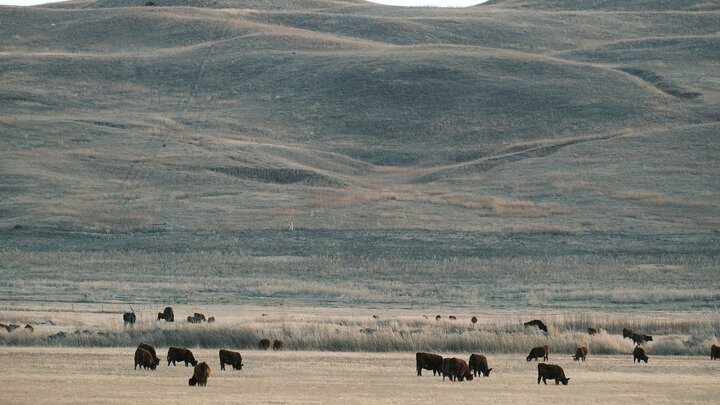In the last few years, buzzwords like precision livestock management have been thrown around quite a bit. Although the official name of “precision livestock farming” debuted in a European conference in 2003, usage of technology in beef production systems isn’t a new thing. Artificial insemination began in the 1950s, use of growth implants became commercially available in 1957, and use of EPDs in bulls started in the 1970s. These 3 technologies adopted in commercial cow-calf systems would be considered precision livestock management tools. However, technology-based systems sometimes get a similar treatment that barbed wire received in the 1800s, which was fondly called devil’s wire.
Innovative technologies will continue to drive improvements in both production efficiency and sustainability in beef production systems. Digital technologies are already transforming agriculture, also known as digital agriculture, which particularly focus on precision cropping/farming. The adoption of technology in beef production systems has been slower to evolve, but opportunities are quickly becoming available to increase production efficiency. In the last 30 years, genetic potential of the cowherd and production costs have steadily increased; however, production outputs (pregnancy rates and weaning weights) have been stagnant or declined. At the same time, cost of production continues to rise. Precision livestock management tools have the potential to address these long-term production and cost trends while potentially decreasing cost of production, increasing output traits and assisting in labor issues.
In the last few years, we have seen an increase in precision technology-driven systems being designed and developed specifically for cow-calf producers in mind. There are pros and cons with these innovative technologies. First adopters to many new technologies take on a big risk. Since so many of these technologies are in some range of stages from infancy to fully developed, new technologies carry a bigger risk of failure and challenges that better technologies may come out after the initial investment. With newer technologies, the cost to establish or maintain can be substantial with limited competitive markets. Understanding the current market, specific technologies or companies, and the risk of investment is important in gaging what technology is right for your needs.
Computerized technologies comprise a substantial portion in today’s digital agriculture, regardless that each computerized system may represent its own challenges. Broadband or connectivity issues in rural communities can limit the adoption, use, or the overall access to the tool. Affordable and effective data integration and aggregation from multiple sources to a usable interface or package can also be a challenge. In these cases, not all technologies are a good investment, particularly for the short-term.
When considering investing in a new technology, some guidelines to think through would be: 1) production goal or gap that this technology addresses on your ranch or farm, 2) expected return on investment, 3) understanding the early adopters’ risk vs. reward, 4) ability of the specific technology to be remotely or otherwise upgraded as technology capabilities/innovations grow, and 5) was the specific tool developed or validated with grazing beef cows in a similar management/environment as your ranch.
At the end of the day, technology will not replace the human component and the ability to manage cattle properly at the ranch. Technology can provide the ability to go from reactive to pro-active management, may assist in labor issues, may improve animal health and well-being, and increase overall resource (land, feedstuff, people) efficiency. Technology can be a great thing, but it isn’t a silver bullet.
To help us better serve your needs, we invite you to complete a quick survey to get your perceptions on using precision livestock management tools for cow-calf operations. The survey is completely anonymous and is expected to take less than 8 mins to complete. Please click on the link or scan the QR code to access the survey: https://go.unl.edu/plm_cowcalf

Interviews with the authors of BeefWatch newsletter articles become available throughout the month of publication and are accessible at https://go.unl.edu/podcast.
Topics covered:
Grazing systems & best practices, Cattle health & BQA, Cattle health, Technology

